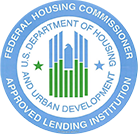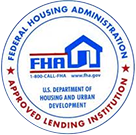Cap
Limits how much the interest rate or the monthly payment can increase, either at each adjustment or during the life of the mortgage. Payment caps don’t limit the amount of interest the lender is earning and may cause negative amortization.
Certificate of Eligibility
A document issued by the federal government certifying a veteran’s eligibility for a Department of Veterans Affairs (VA) mortgage.
Certificate of Reasonable Value (CRV)
A document issued by the Department of Veterans Affairs (VA) that establishes the maximum value and loan amount for a VA mortgage.
Change Frequency
The frequency (in months) of payment and/or interest rate changes in an adjustable-rate mortgage (ARM).
Closing
A meeting held to finalize the sale of a property. The buyer signs the mortgage documents and pays closing costs. Also called “settlement.”
Closing Costs
These are expenses – over and above the price of the property- that are incurred by buyers and sellers when transferring ownership of a property. Closing costs normally include an origination fee, property taxes, charges for title insurance and escrow costs, appraisal fees, etc. Closing costs will vary according to the area country and the lenders used.
Compound Interest
Interest paid on the original principal balance and on the accrued and unpaid interest.
Consumer Reporting Agency (or Bureau)
An organization that handles the preparation of reports used by lenders to determine a potential borrower’s credit history. The agency gets data for these reports from a credit repository and from other sources.
Conversion Clause
A provision in an ARM allowing the loan to be converted to a fixed-rate at some point during the term. Usually conversion is allowed at the end of the first adjustment period. The conversion feature may cost extra.
Credit Report
A report detailing an individual’s credit history that is prepared by a credit bureau and used by a lender to determine a loan applicant’s creditworthiness.
Credit Risk Score
A credit score measures a consumer’s credit risk relative to the rest of the U.S. population, based on the individual’s credit usage history. The credit score most widely used by lenders is the FICO® score, developed by Fair, Issac and Company. This 3-digit number, ranging from 300 to 850, is calculated by a mathematical equation that evaluates many types of information that are on your credit report. Higher FICO® scores represents lower credit risks, which typically equate to better loan terms. In general, credit scores are critical in the mortgage loan underwriting process.







